| Luis Hess: | Born in Erfurt, Germany October 3, 1908 Deceased in Sosúa February 9, 2010 |
| Ana Julia Hess: | Born in Puerto Plata December 21, 1920 Deceased in Sosúa November 11, 2000 |
Children: Franklin, Cecil
Grandchildren: Rachel, Karen
Parents of Luis Hess : Andre and Elizabeth Hess
FAMILY HISTORY:
Kurt Luis Hess was born in Erfurt, in the province of Thüringen, Germany on the 3rd of October of the year 1908. His father was Adolf (later Andre) Hess and his mother was Elsbeth (later Elizabeth). The Hess family had a large shoe factory, which was founded by Kurt’s grandfather, Luis Hess.
Upon completing high school his parents sent him to the École Supérieure de Commerce in Neuchatel, Switzerland, to study languages during the years 1925 and 1926. Upon completing his studies of English, French and Spanish, they sent him to the United States (Milwaukee and Fond du Lac, Wisconsin, St. Louis, Missouri, and other locations) during 1927 and 1928 to study the American system of fabricating shoes.
After returning from USA, Kurt worked at the shoe factory and also sold shoes to clients in some regions of Germany. There was an economic crisis in Germany. Things in the shoe factory worsened. This economic crisis affected not only the Hess factory business but all the businesses in the country. Shortly after Hitler took power in 1933 there was a nationwide boycott against all the Jewish stores (this was the first large manifestation of anti-Semitism). Militia men from the SA and SS prevented clients from entering the stores. This included the large department stores as well as other stores. They wrote on the shop windows: “Do not buy from Jews.” When Kurt saw this, he decided to leave Germany, which he did in 1933.
Though Kurt had left, his parents stayed in Germany. They, as well as most other people, thought that this situation could not last for a long time. Kurt went to Barcelona, where he tried different businesses, and in 1934 headed to Ibiza, a small island in the Mediterranean Sea. Ibiza was an art center in those days, and many good painters worked there. There he opened the restaurant Bar Puertoon the pier. It offered European (rather than Spanish) food and was very successful. Most of the tourists preferred the European food.
July 17, 1936 marked the beginning of the Spanish Civil War. Ibiza managed to remain (http://en.wikipedia.org/wiki/Spanish_Civil_War) under the control of Franco’s troops. Two months after the start of the Civil war, Republican war ships came to Ibiza, and asked the population to abandon the city because they would bombard it if Franco’s troops did not surrender. Most people left the city including Kurt, but many remained. After the bombardment Kurt returned to the city, which had not suffered much, and reopened the Bar Puerto. The very first day, the restaurant was full with Republican soldiers who turned out not to have money to pay the bill. They felt that “we had to be grateful for liberating us,” and did not feel compelled to pay. The soldiers eventually gave Kurt vouchers that could be collected in City Hall. He was never able to collect payment. Later on he decided to close the business.
About 2 or 3 weeks later, Italian planes under Franco’s orders bombarded the city (without any warning) and killed thousands of people who were sleeping during siesta on a Sunday afternoon. There was no water, dead people started to rot, and there was complete chaos.
Some foreign ships arrived to evacuate, without charging money, all the foreigners. These ships came from all over – England, France, Germany, and others – to help foreigners leave Spain. Kurt left Spain without money on an Italian ship that went to Naples. In Naples he was greeted by the German consul, who was kind to him and gave him money to travel by train to Munich. Kurt wanted to go to Latvia, where he had friends, but the consul only gave him money to go to Munich. In Munich he was interviewed by the Gestapo, and after much intimidation they allowed him to continue to Latvia, as long as he could pay his own way. He received help from the Jewish community, who gave him money to complete his journey to Latvia. In Latvia he stayed with friends for about six months in the city of Libau (Liepâja). Afterwards he decided to go to Paris, where his parents were living. His parents had left Germany in 1934 after losing the shoe factory, and had a small shoe business in Paris.
Kurt arrived in Paris in early 1937 and found work representing a company of pharmaceutical products at drugstores. He had the advantage of speaking the language. He obtained a visa with relative ease because in those days there was an International Fair in Paris. Kurt still had a German passport without the “J.” Jews with a “J” stamped on their passport had difficulties in traveling since most countries did not accept them. In those days it was not easy to travel between countries, and if they knew that one was a Jew, they would refuse entrance. Kurt managed to stay in Paris with his job, but later his residence visa was not renewed.
Kurt had registered with a Jewish organization in Paris which provided help to all the refugees. This organization was very good to the refugees, many of whom arrived without money and needed both money and work. Kurt was given the option of leaving France or going to jail, which in those days were full of those Jewish refugees who could not leave. He obtained short visa renewals, which permitted him to go from one consulate to the other looking for a visa to go anywhere. He could not find any country that would grant him the visa. Eventually, after being refused visas from many countries, he came across a sign: “Embassy of the Dominican Republic.” Without knowing much about this country, he went inside and met the consul, who in those days was Virgilio Trujillo. Kurt conversed with him in Spanish, and obtained a residence visa to go to the Dominican Republic. He had to give him a small tip, which was supposedly for expenses associated with telegraph and other charges. Kurt immediately left in June of 1939 on the ship Bretagne, and arrived in Puerto Plata on the 25th of June 1939 with exactly $50 USD on him.
From Puerto Plata he went by truck to Ciudad Trujillo. He arrived at the corner of Avenida Mella and Duarte. The driver told him that these were the main streets. There he was, standing with his suitcase. At the time, Kurt did not think that he would live there very long, but he was glad to be there when WWII started in September of 1939.
By chance, he met some Jewish Austrian refugees, and he stopped to speak with them. These were the Kohns and the Fleischmanns, who had arrived a few months earlier. They lived in a large house were they rented some rooms. Kurt moved to this house and rented a room there. The Fleischmanns helped him make some furniture, including a bed.
Kurt ate primarily at the market near Columbus Park on Arzobispo Noel Street. In those days, a complete meal consisting of rice, beans, salad, plantains and a little meat cost 7 cents. On Sundays the meal cost 15 cents and included a quarter of a chicken. He thought that the food was quite good and actually gained weight eating there. Kurt even tried some fancier restaurants, such as El Democráticoon the street Isabela Catolica, where one could eat arroz con pollofor 25 cents. But this was considered a luxury. Cheap in those days was lobster, which could be bought for 7 cents in the market.
In Ciudad Trujillo Kurt taught Spanish to the Jewish refugees, who were very eager to learn. He also taught English to refugees and Dominicans alike. In addition, he translated documents, and all in all lived a very decent life.
Later in 1939, a commission from the American JOINT (American Jewish Joint Distribution Committee) came to visit. They were looking for a place to found a colony for Jewish refugees. This was a result of the treaty of Evian, France of 1938 in which Trujillo had offered to welcome 100,000 Jews to live and work in the Dominican Republic. Three representatives of the JOINT came to negotiate with the Dominican government and needed an interpreter. Since Kurt was already known for his language classes, he was recommended for this job. One of the members of this commission was a lawyer by the name of Norman Rosenberg. He dictated to Kurt the contract between the DORSA and the Dominican government. The contract called for a colony in Sosúa, which they liked very much.
They offered Kurt a job in Sosúa working in the DORSA. He accepted the position, although he thought that this was going to be a temporary occupation, and did not think that he would stay to live in Sosúa forever. Kurt arrived in Sosúa in June of 1940, one month after the first group of refugees had arrived there in May. These settlers came from Germany, for the most part.
Thus Kurt arrived to work in the DORSA office during the day, and would teach Spanish at night. Kurt’s parents, he learned, were in Havana. They had been placed in a camp in France after the war started. They obtained a visa to go to Cuba, and decided to go there. In the meantime, one of Kurt’s uncles, Willy Hess, who had moved earlier to the United States, had obtained a visa for them. This visa took some time in being issued, so Kurt’s parents decided to wait for it in Havana instead of taking chances in the French camp. It should be noted that those who obtained visas could leave the camp. Kurt’s parents had placed an ad looking for him in a newspaper of Jewish refugees, Der Aufbau. Someone in Sosúa saw this ad and alerted him. He then wrote to his parents.
The first year after arriving in Sosúa, Kurt ate on occasions with Antonio Imbert and other Dominican friends. (Imbert would later be one of the men who assassinated Trujillo and would become a prominent general.) Some of these friends invited him to a dance in Long Beach (Puerto Plata). There he met and fell in love with Ana Julia, the woman he would marry on March 2, 1941.
Mr. Perlstein, the DORSA manager in Sosúa at the time, was very much against Jewish settlers marrying Dominicans. Kurt was the first to break this taboo, which was not approved by the DORSA. Eventually the DORSA grew used to it, and other settlers married Dominicans later.
About a year after Kurt was teaching Spanish to the settlers he was offered the opportunity to teach in the school, Escuela Cristóbal Colón. He accepted. Mr. Scheer was then the principal of the school. He taught Kurt skills necessary to become a teacher. In addition, in those days, the official school inspectors offered workshops every Saturday aimed at preparing teachers. There he learned teaching methodology. After Mr. Scheer left, Kurt was offered the position of principal, and altogether worked at the school for 34 years.
The first years of marriage were hard. Kurt worked half a day in the DORSA office, half a day in the school, and also worked private jobs (such as doing translations) to increase their income. The family grew with the arrival of their first son Franklin. Ana Julia, worked as a seamstress all day long. Later Kurt worked full time in the school.
After receiving his farm, his typical day would start at 4 a.m. Kurt would ride 8 kilometers by horse to the farm to witness the first milking (they milked the cows twice a day). He had to be back home by 7 a.m. to get ready for school, which started at 8 am. Many times he had to go back to the farm in the afternoon.
The family lived in a very small house (later it belonged to Luis Wachsmann) on the Pedro Clisante street, which they shared with other young settlers. The refrigerator and the bathroom were in the house next door. They had to share those with many other settlers. The settlers did have a latrine in the yard and running water in the kitchen. Life was very simple. On Saturday evenings they went to Café Stockmann (located behind the market), where they danced and drank lemonade for 3 cents per bottle. The café offered good Viennese pastries. On occasions Kurt bought a Dominican wine made of grapes, and Ana Julia and he sat outside and sang to the tune of his guitar. There was also a baker, Mr. Kurt Heiss, who baked Austrian-type goods. His bakery was in the corner across the street from the Oasis.
On occasions, the settlers would organize a play and present it in one of the barracks which served as movie house, theater, and the like. Some of these plays were of excellent quality since some of the settlers had been artists in Vienna. The settlers also went to conferences on various topics offered by Dr. Robitschek, to other settlers, and also people who came from abroad. At first, Kurt and Ana Julia were the only ones in Sosúa to have a battery- powered radio. On occasions, some settlers came to visit with them and listen to the radio news. Many years later the Oasis Restaurant was founded, and Kurt and Ana Julia used to go dancing after the movies.
His second son, Cecil, who was born and raised in Sosúa wrote this brief story after interviewing his father in 1986.
PHOTO GALLERY
- Rachel, Ryan, Bruce, Karen, Ronnie, Kelly, Josefina, Cecil
- Franklin, Ana Julia, Luis, Josefina, Cecil, Rachel, Karen
- Karen, Franklin, Marianne, Josefina, Luis, Ana Julia, Rachel, Cecil (1986)
- Ana Julia, Luis, Socorro Martinez – Last day of school
- Luis at farm (1978)
- Franklin, Rachel, Ana Julia, Karen, Josefina, Cecil, Luis
- Luis Hess (sitting) receiving Merit Diploma
- Franklin, Luis, Cecil, Ana Julia, Mr. and Mrs. Luis Hess parents in 1959
- Cecil and Susana Sanchez
- Franklin Birthday party (Unknown children)
- Cecil, Shirley Tauber at a play in ECC
- Luis and Ana Julia
- Unknown and Luis
- Franklin
- Luis
- Luis
- Luis and unknown friend
- Franklin and Ana Julia
- Luis
- Luis
- Luis
- Luis with unknown
- Luis Hess Resident permit into the Dominican Republic
- Luis, Ana Julia, Franklin in El Batey
- Luis and Ana Julia – Airport Ciudad Trujillo
- Wedding of Ana Julia and Luis
- Wedding of Ana Julia and Luis
- Standing: Luis, Cecil, Ana Julia, Franklin; Sitting: Elizabeth, Andre
© Copyright Protected

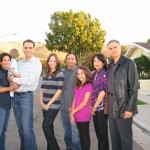
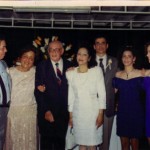
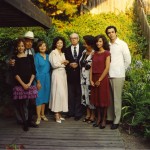
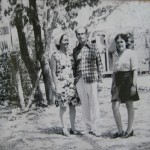
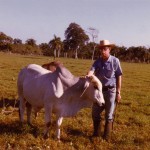
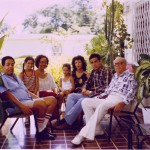
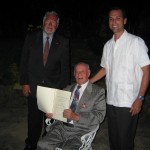
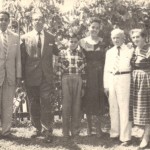
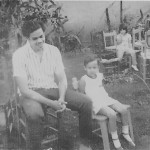

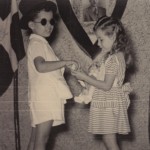
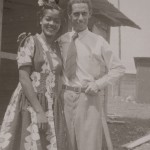
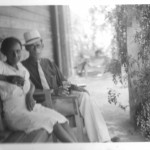

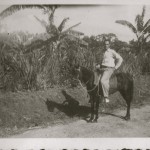
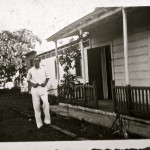
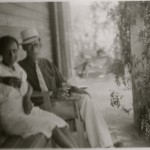

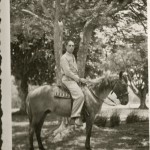
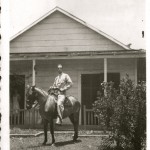
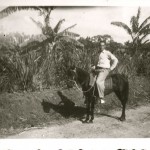
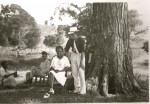
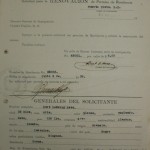
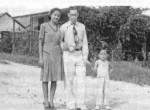
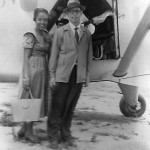
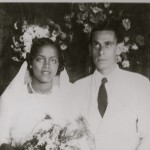


One Response to Hess, Kurt Luis & Ana Julia